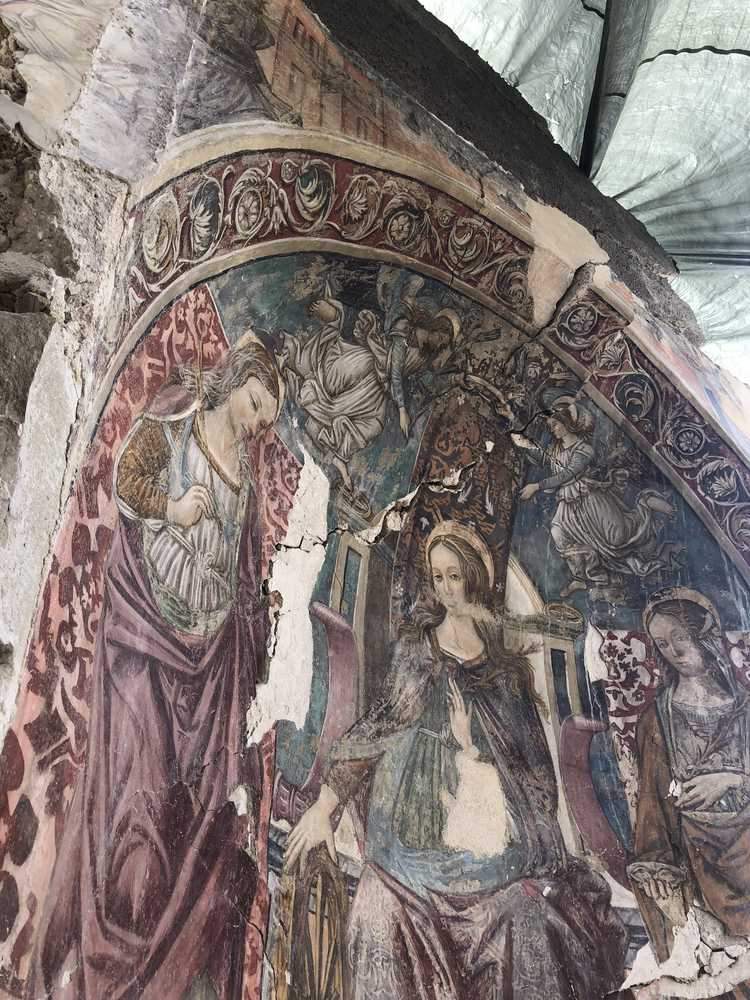Ministry of Cultural Heritage technicians have recovered a 16th-century fresco in the church of Santa Maria della Misericordia in Accumoli, which collapsed almost completely in the aftermath of the earthquake that struck central Italy in 2016: the quakes of Oct. 26 and 30, 2016, in particular, inflicted damage on the building. The fresco, depicting St. Catherine of Alexandria with St. Agatha and St. Lucy, had remained standing despite the collapse of large portions of the adjoining masonry and the wooden roof above. The fresco is part of the original decoration of the church, built in the 16th century but extensively renovated between the 17th and 18th centuries. The characters move within a frame decorated with floral motifs: the author, at least according to the hypotheses of the great scholar Federico Zeri who dealt with this cycle of frescoes, could be Baldo de’ Sarofini (Perugia, news between the late 15th and early 16th centuries), an Umbrian artist who was influenced by the lesson of Carlo Crivelli.
The fresco, given the heavy deterioration it suffered during the earthquake, was detached: an operation that was particularly complex due to the type and static condition of the masonry, but it was considered the most appropriate to ensure the best conservation of the work, allowing the preservation of the architectural structure in which it was born and the whole of its material characteristics. In particular, to remove the work, the technique of detachment to mass was adopted, which involves cutting the wall and then removing not only the pictorial film but also the plaster and part of the masonry. In the case of the Accumoli fresco, given the fact that the masonry consists of heterogeneous and very disjointed materials, it was decided to recover the entire fifth wall. The technicians then built a retaining structure with steel profiles and wooden planks that encompassed the portion of the masonry to be recovered. The remaining connections with the rest of the masonry were then cut and moved by crane for transport to the MiBAC depot in Cittaducale (Rieti). Prior to the structural interventions, the cohesion and adhesion of the pictorial film and the underlying plaster layer were restored.
The intervention was coordinated by the Lazio Regional Crisis and Coordination Unit, in synergy with the Fire Department and the Carabinieri Cultural Heritage Protection Command. “Thanks to the professionalism, passion and spirit of service of the MiBAC officials and personnel of all the bodies involved in this operation,” said Minister for Cultural Heritage and Activities Alberto Bonisoli, “the activity of recovering the extraordinary cultural heritage present in the territories affected by the earthquake in central Italy continues. A work of great value that allows to preserve the very soul of the communities.”
Pictured is the recovered fresco
 |
| Central Italy earthquake, MiBAC technicians recover a 16th-century fresco in Accumoli |
Warning: the translation into English of the original Italian article was created using automatic tools. We undertake to review all articles, but we do not guarantee the total absence of inaccuracies in the translation due to the program. You can find the original by clicking on the ITA button. If you find any mistake,please contact us.